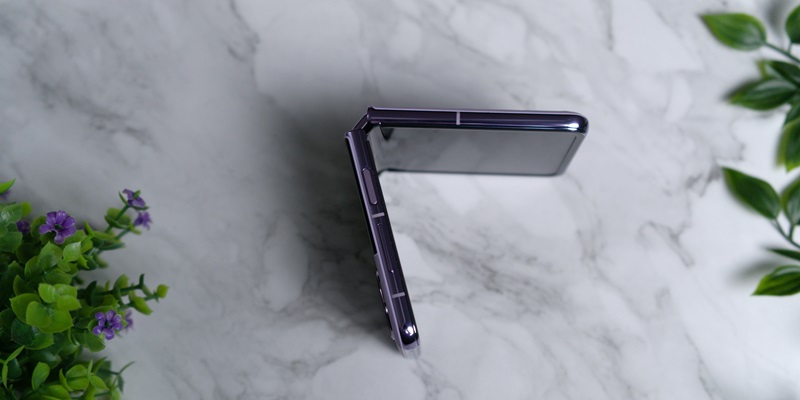Motorola has recently filed a new patent with the United States Patent and Trademark Office (USPTO), detailing a motorized hinge for foldable smartphones that promises innovative enhancements in usability and functionality. This new motorized hinge design aims to drastically improve the alignment capabilities of the secondary display and cameras in foldable smartphones, positioning Motorola ahead in a rapidly evolving market. Unlike current foldable phones such as the Samsung Galaxy Z Flip 6, which can be partially opened to utilize the hinge as a tripod, Motorola’s patented hinge boasts a built-in motor capable of independently adjusting the angle. This feature aims to make video chats more user-friendly by keeping the user centered in the frame, even as they move, and could also facilitate better selfies and group photos taken autonomously by the smartphone.
Technological Advancements
Enhanced Alignment Capabilities
Motorola’s new patent breaks new ground in the realm of foldable smartphone technology by introducing a motor that can be embedded directly into the hinge or served as a clip-on accessory to manually adjust the position. This innovation is designed to overcome the limitations of current software solutions, which often rely on ultra-wide-angle cameras for subject tracking. These software mechanisms frequently falter if the user is positioned too close or too far from the camera. Consequently, Motorola’s motorized hinge could provide markedly improved reliability and precision in subject tracking. This aims to ensure that whether you’re taking a selfie, participating in a video call, or capturing group photos, the camera maintains perfect alignment, sharply focusing on the subject.
This enhancement isn’t just about improving photo and video quality; it offers a practical solution to everyday issues faced by users. When using current foldable smartphones, maintaining a steady position to keep aligned with the camera can be a challenge, especially during long video calls or when trying to capture a perfect moment in a photograph. The motorized hinge would reduce or even eliminate this hassle, enabling users to move freely without worrying about going out of frame. This could particularly benefit business professionals who depend on video conferencing and influencers who require high-quality content creation tools.
Advancing AI User-Friendly Features
Motorola’s motorized hinge represents a significant leap toward more adaptable and user-friendly artificial intelligence in foldable smartphones. By integrating mechanical systems with AI, the phone could autonomously adjust the screen and camera angles for optimal user positioning, even during movement. This development could simplify activities such as video calling and photography, which will be especially beneficial in a time when virtual interactions are becoming increasingly common. In addition to enhancing user experience, this innovation could also contribute to setting new industry standards for foldable smartphone technology.
Imagine a scenario where you are in the middle of a video call, and you need to move around the room—perhaps to grab a document or show something on another screen. With current technology, you’d have to manually adjust your phone or risk going out of frame. Motorola’s motorized hinge would automatically adjust to keep you centered, making for a seamless and professional video-calling experience. This integration of mechanical and artificial intelligence could surpass the capabilities of today’s software alone, positioning Motorola as a pioneer in user-friendly foldable technology.
Market Implications
Impact on Competitive Landscape
The patent filing arrives at a time when the foldable smartphone market is expanding rapidly, with recent releases like the Xiaomi Mix Fold 4 and Infinix Zero Flip adding variety to consumer choices. Motorola’s innovative motorized hinge could set new standards and raise the bar for competition in the industry. If commercialized, it would offer a unique selling point, distinguishing Motorola from other brands that rely solely on software for camera and screen alignment. This new technology may compel other players in the market to either catch up or introduce their own innovations, leading to a more dynamic and competitive landscape.
The potential for this technology to influence the market is substantial. In an industry where iterative improvements and groundbreaking features alike can spell success or failure for new products, Motorola’s motorized hinge could be a game-changer. It not only addresses practical problems faced by users but also showcases technological prowess, signaling to competitors and consumers alike that Motorola is committed to leading the way in foldable smartphone innovation.
Considerations for Commercialization
Motorola’s new patent revolutionizes foldable smartphone technology by integrating a motor directly into the hinge or offering it as a clip-on accessory to manually adjust the position. This breakthrough addresses the limitations of current software solutions, which often rely on ultra-wide-angle cameras for subject tracking and can fail if the user is too close or far from the camera. Motorola’s motorized hinge aims to deliver far better reliability and precision in subject tracking. This ensures that whether taking selfies, joining video calls, or capturing group photos, the camera stays perfectly aligned and focused on the subject.
This innovation is more than just enhancing photo and video quality, it provides a practical solution to common issues users face. With existing foldable smartphones, staying aligned with the camera can be challenging, especially during long video calls or when trying to capture a perfect moment. The motorized hinge minimizes or even eliminates this difficulty, letting users move freely without worrying about going out of frame. This is particularly advantageous for business professionals who rely on video conferencing and influencers who need high-quality content creation tools.

